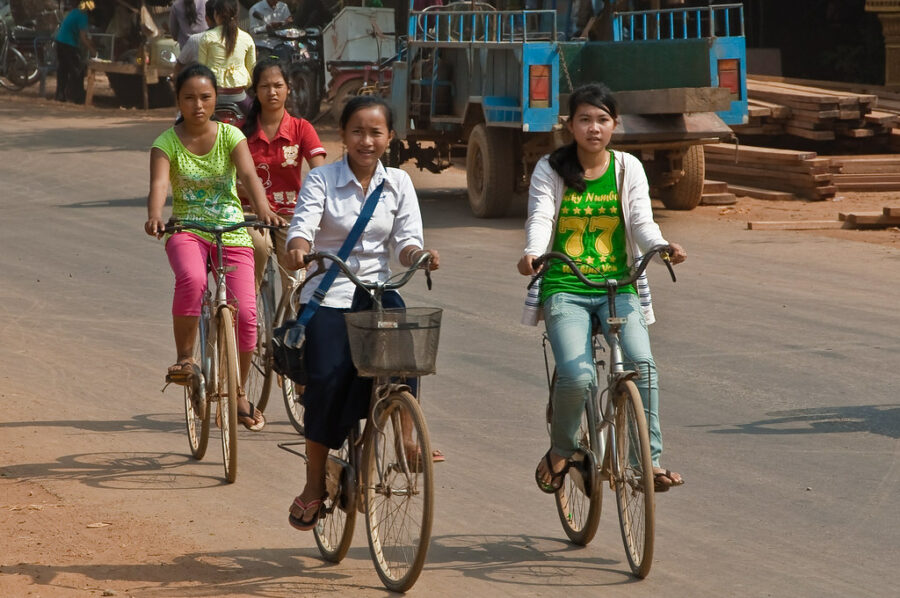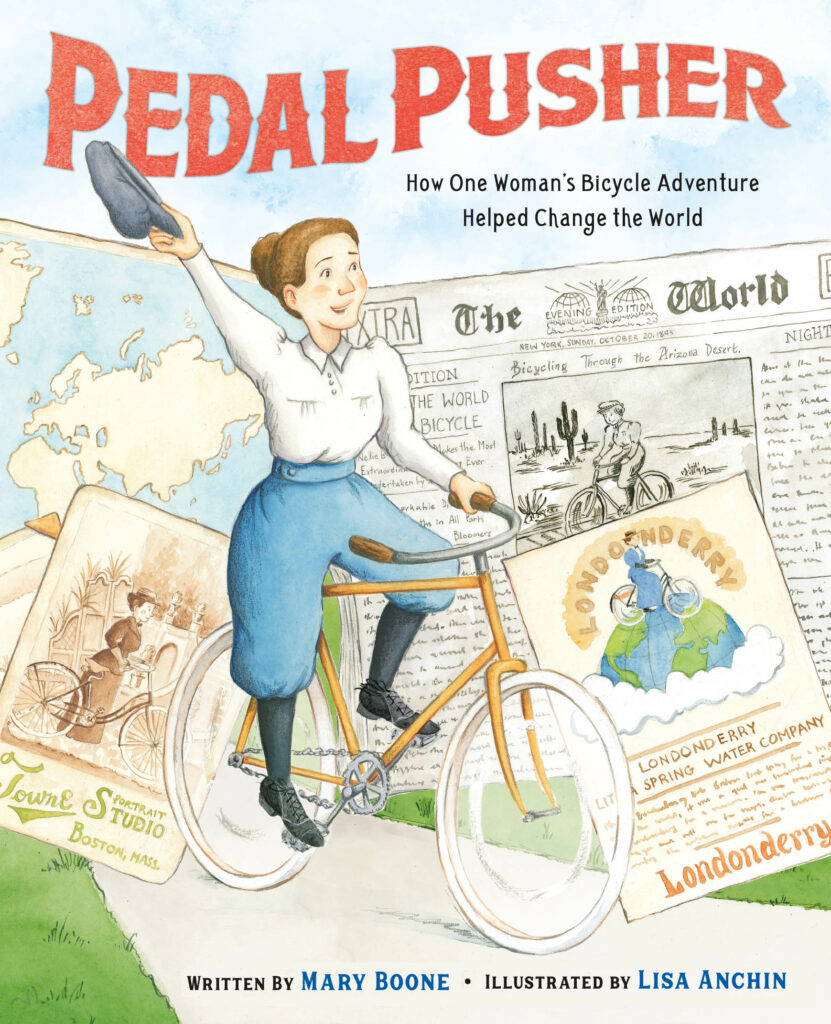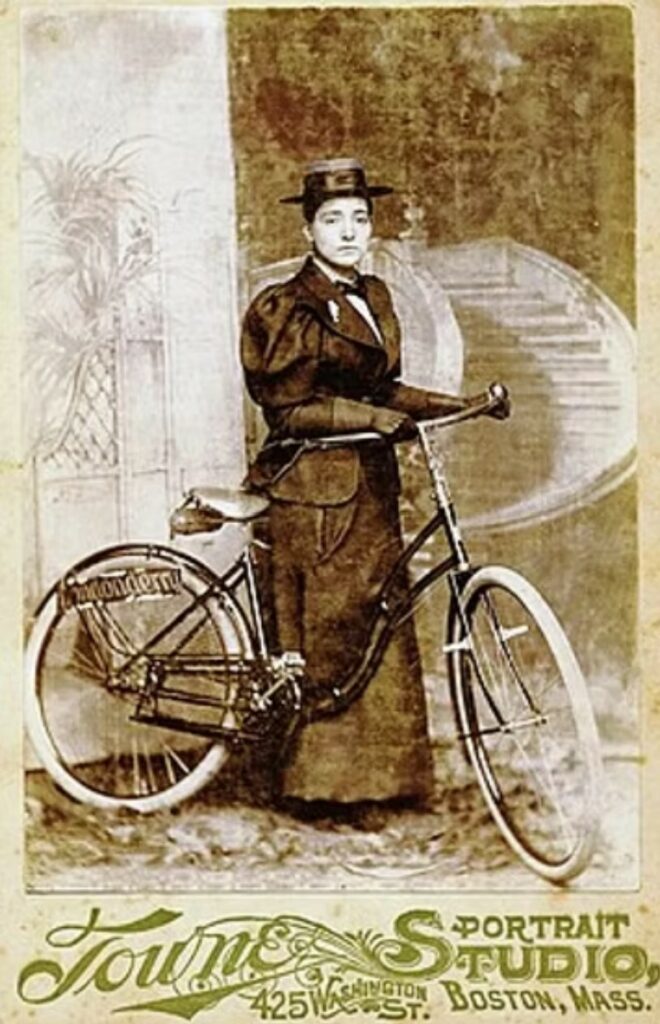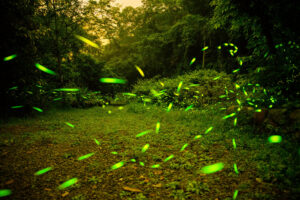GUEST BLOGGER MARY BOONE
Every day, millions of people ride bicycles – about half of them children. They ride for fun. For exercise. To get from place to place.
Here’s something all your pedaling pupils may not realize: Riding a bike requires a whole lot of science.
- Bicycles convert a rider’s energy into kinetic energy.
- Momentum and balance help keep a bike stable.
- Gears increase pedaling force and speed.
- Brakes use friction to slow or stop a bike.
- Handlebars are a type of lever used to steer a bike.
- Tires use friction to grip the road and move a bike.
Books about bicycles are a terrific way to introduce bike-centric STEM lessons. They can also be a great way to help students make the intellectual leap from those STEM lessons to language arts.
Preparation
Introduce students to Pedal Pusher: How One Woman’s Bicycle Adventure Helped Change the World. Help them understand why cyclist Annie Cohen Kopchovsky’s bike adventure was significant. You might ask:
- Have you ever learned to ride a bike? What do you remember about that? What was the most difficult part of the process?
- Why do you think bicycles are important in history and today?
- How has bicycling changed over the years?
Activity #1: A how-to guide
Annie was an unlikely person to take on the challenge of riding around the world for a number of reasons – including the fact that she had never, ever ridden a bike. She had to take lessons before se could depart.
Tell students to imagine they are teaching someone who has never ridden a bicycle before. Their task is to write clear step-by-step instructions to help them learn to ride.
Introduction
Your would-be instructors should start with a short paragraph explaining why learning to ride a bike is important and fun.
Materials needed
Students should list all required materials and equipment.
Directions
- Use clear, numbered steps.
- Start with basics like checking the bike and putting on a helmet.
- Include tips on balancing, pedaling, steering, and stopping.
- Explain what to do if they lose balance.
- Mention safety rules
Conclusion
End with a few sentences about the need for practice and how rewarding it can be when you’re able to ride well.
Review and revise
Students can work with a partner or in small groups to read each other’s instructions. Ask them to note: Are any of the steps difficult to follow? Does reading someone else’s instructions remind them of a step they missed? Can they revise to make their writing clearer?
Activity #2: Bike of the future
The “penny farthing bike” with a tall front wheel quickly went out of fashion when the “safety bicycle” was introduced in the 1890s. The safety bike closely resembles today’s bikes – with two wheels of the same size, a chain drive, and air-filled tires.
That’s the past. Now it’s time to dream about the future. Ask students to pretend it’s the year 2100. People now live on Mars, cars drive themselves, and Taylor Swift’s great-granddaughter is a pop star. Challenge students to create futuristic bikes befitting this new world.
Bike design
Each student should draw or otherwise create a labeled diagram of their futuristic bike. Encourage them to include key parts, such as wheels, seat, handlebars, and any new features.
Get writing
Your bike designers need to start by giving their new creations names. Each student should write a description of their bike, explaining what makes it different from today’s bikes. Encourage students to use clear and descriptive writing, including:
- A description of at least three special design features.
- Details about how the bike helps the environment or makes biking easier.
- Information about who would use this bike and why it’s helpful or fun.
Extra
Encourage students to create an advertisement for their futuristic bike. They can design ads – digital or posters – that highlight the bike’s best features along with a catchy slogan. Creativity and persuasive language are essential if they want their bike to be the must-have ride of the future.
Featured image credit: “Cambodian school girls” by Jonas Hansel is licensed under CC BY-NC-SA 2.0.
Mary Boone has hung out backstage with a boy band, DNA-tested salmon, and baked dozens of cricket cookies – all in the interest of research for her 70+ books for young readers. Mary’s books include PEDAL PUSHER (Henry Holt & Co.), SCHOOL OF FISH (Albert Whitman & Co.) and BUGS FOR BREAKFAST (Chicago Review Press). Other books on the horizon include picture book biography FLYING FEMINIST (Andersen Press, 2026) and a middle-grade collection of stories related to our oceans, UNFATHOMABLE (Bright Matter, 2026). She loves visiting schools and libraries all over the country. www.boonewrites.com – Instagram – X – BlueSky – Facebook













Leave a Reply
Your email is safe with me.